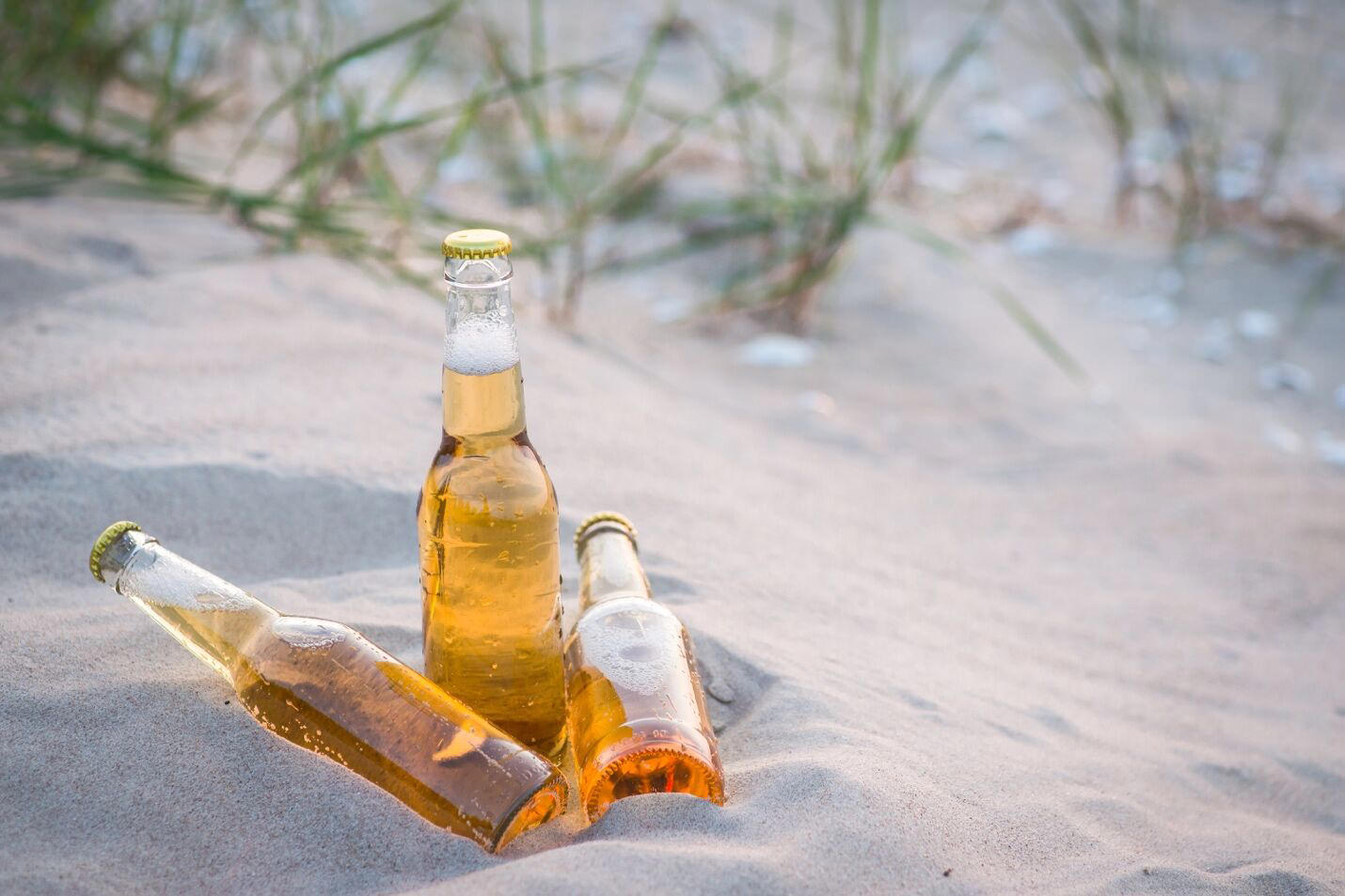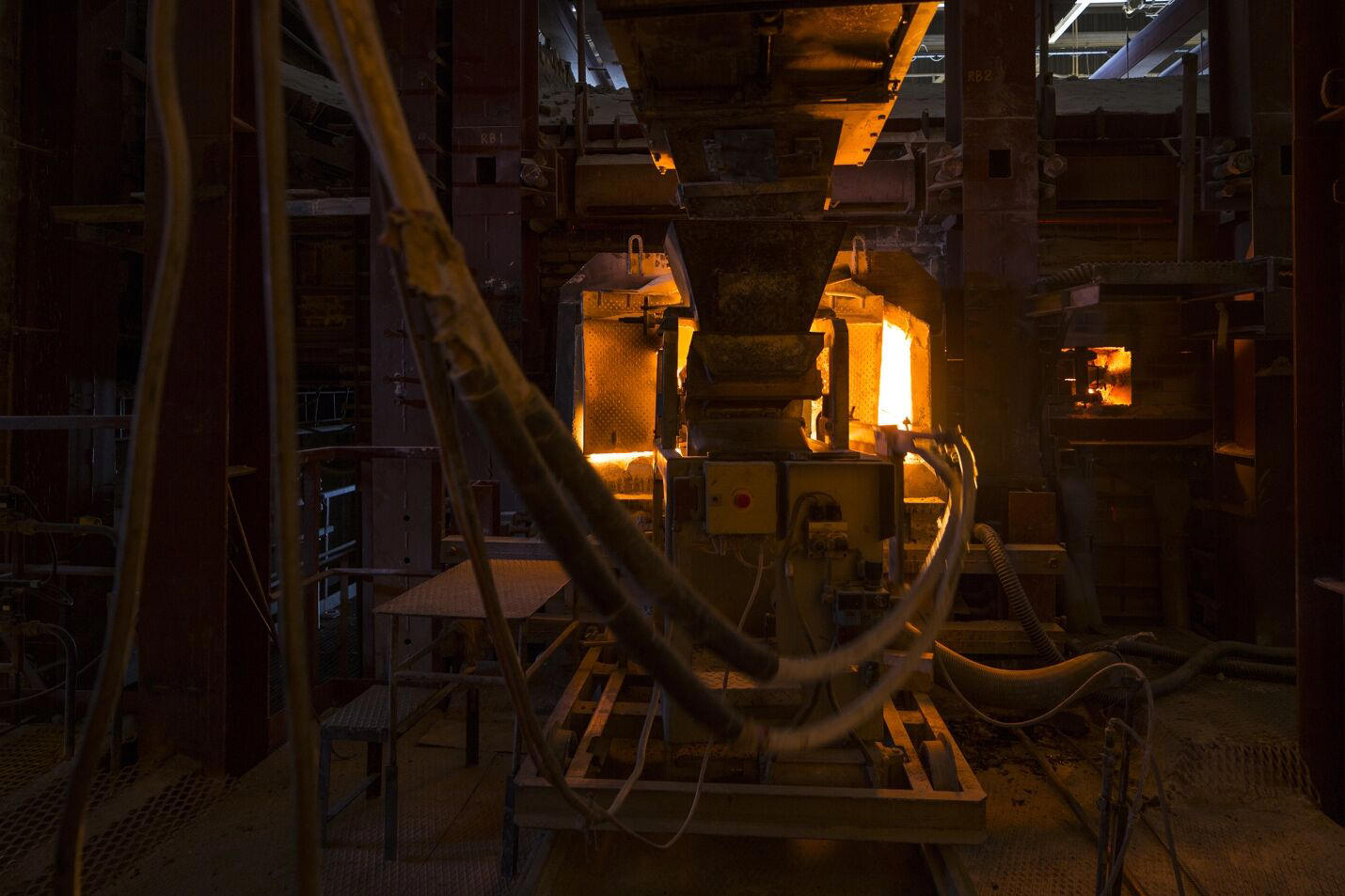
The Raw Ingredients of Glass
Every glass bottle starts as a batch of raw materials. These materials are comprised mostly of silica (sand). Also included is a smaller percentage of sodium carbonate (also known as soda ash), limestone (calcium), and coloring agents, for colored glass bottles. All raw materials are closely inspected for quality. Along with these raw materials, recycled and ground glass, known as cullet, is also added into the mix. Cullet generally comes from municipal recycle programs or from the production scrap from the manufacturing process. Recycling glass reduces in-house waste and helps to augment the supply of cullet necessary for manufacturing glass bottles.
The raw materials mixture is then transferred to the furnace feed hopper at a controlled rate. Materials are then heated continuously in large furnaces to a temperature of about 2,350 degrees Fahrenheit. Raw materials spend time in the furnace as they are melted into glass. Molten glass is then fed into the forehearth, where it cools to about 2,200 degrees Fahrenheit. At this point in the process, the molten glass will have the consistency of honey. Once the molten glass is ready, it moves from the furnaces and carefully measured gobs of molten glass are fed into the forming machine.
Taking Shape
During the forming process, the molten glass is shaped by using one of two distinct methods for forming glass bottles. These methods include:
Blow and Blow - in this method, the gob of molten glass is guided into a blank mold. Air is then injected into the mold, forming the neck finish of the bottle. Additional air is injected through the neck to begin forming the lower shape of the bottle - at this point, the partially-formed bottle is called a Parison. The parison is then transferred from the blank mold to the blow mold and reheated as additional air is injected to blow the container into its final shape.
Press and Blow - in this method, the gob of molten glass is guided into the blank mold. The mold is then sealed with a baffle. A plunger presses into the gob, forming the shape of the neck finish. This Parison is then transferred to a blow mold, where it is reheated as air is injected to blow the bottle into shape.
The forming process only takes a few seconds to achieve a completed bottle. Finished glass bottles are removed from the machines. Glass bottles are still very hot coming out of the forming machines, with temperatures still hovering over 1,000 degrees Fahrenheit.
The Annealing Process
As glass bottles emerge from the forming machine, they must be annealed. Annealing is a reheating and slow cooling process that relieves the internal stresses on the glass that could occur. Because one area of a piece of glass may be thick (staying hotter longer) and another area may be thin (cooling down quickly), the steep temperature gradient between those areas causes stress that could cause the glass bottle to fracture as the bottle cools unevenly. So, once bottles are fully formed, a reheating and gradual cooling process must take place to ensure the internal stresses of the glass are relieved. This is accomplished by placing the bottles into a tunnel furnace called the annealing lehr. The furnace reheats the glass to a temperature of about 1,050 degrees Fahrenheit and then, over a long period of time, gradually reduces the temperature to about 390 degrees Fahrenheit.
As the glass exits the lehr, a cold end coater is used to apply an exterior coating that helps to reduce abrasions on the surface of the glass.
The Aftermath
All glass bottles are subjected to quality control measures using specialized equipment and technology to ensure glass thickness, bottle dimensions, and overall appearance conforms to the tolerance specified. Bottles which do not meet strict requirements are removed from the assembly line and returned to the furnace to be reused as cullet in the next batch.
Bottles are then packed and shipped to the customer for use.
Starting with just small grains of sand, the transformation process from raw materials to finished bottle is nothing short of amazing. Attention to detail is paid to every bottle shape and size to ensure the highest quality standards are met with each container. All wholesale glass bottles manufactured by O.Berk are ready to be used for products such as health and beauty containers, food-safe glass bottles and beverage bottles, and pharmaceutical products. They are also 100% recyclable.

For an infographic on the glass manufacturing process, click here: Infographic - From Grit to Glass, How Are Glass Bottles Made.
View the video: From Grit to Glass: How Glass Bottles are Made







































